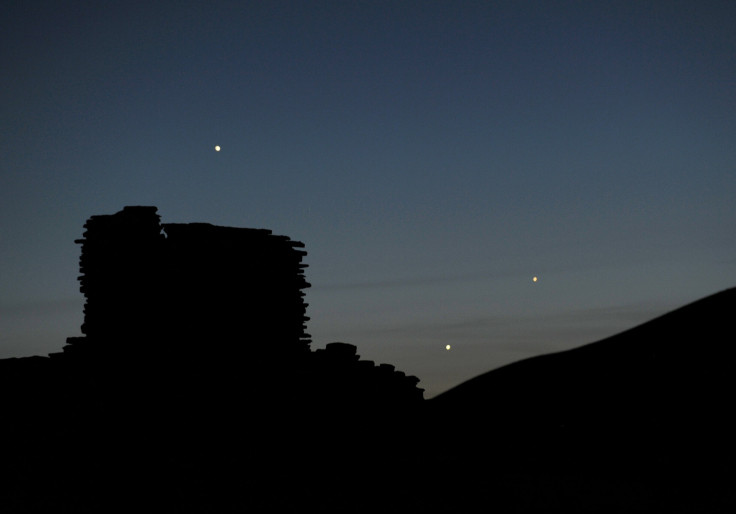Mercury, Venus, Mars, Saturn And Jupiter In Rare Planetary Alignment: How, When And Where To Watch

The early bird catches five planets beginning Wednesday. From the closest planets to the sun to large gas giants, the pre-dawn sky will be filled with members of our solar system. From Wednesday to February 20, Mercury, Venus, Mars, Jupiter and Saturn are visible with the naked eye.
A few planets are more visible than others, but the rare celestial event does not require additional charts or visual aids. All it takes is a bit of dedication to waking up earlier than normal. The show begins 45 minutes before sunrise, according to Sky & Telescope. During that time, all the planets have risen above the eastern horizon.
Looking east, Mercury will be the lowest on the horizon toward the southeast . Skygazers should try to find Venus and Jupiter — the brightest planets in the sky — to find the other planets. After locating Venus, pre-dawn risers should look southeast to find Mercury slightly lower in the sky. Above Venus is Saturn with the added bonus of Antares — one of the brightest stars in the nightsky. The star will appear slightly red to the naked eye.
Mars will be the trickiest planet to spot because there are no other bright anchor points near the planet. After finding Saturn, try to follow a diagonal line upward and to the right. Spica, a bright double star, is to the right and slightly below Mars. Jupiter can be found to the far right. The planets will rise higher in the sky with each passing day, with the period beginning January 25 being an ideal time to view the planets.
The last time the five visible planets of our solar system were aligned in the sky was from December 15, 2004 to January 15, 2005, EarthSky reported. If waking up early does not sound appealing, there is another chance in 2016 to observe the planets in the sky. There will be an alignment in the night sky from August 13 to 19. Mercury and Venus will be slightly harder to spot because of their location near the horizon.
© Copyright IBTimes 2025. All rights reserved.





















